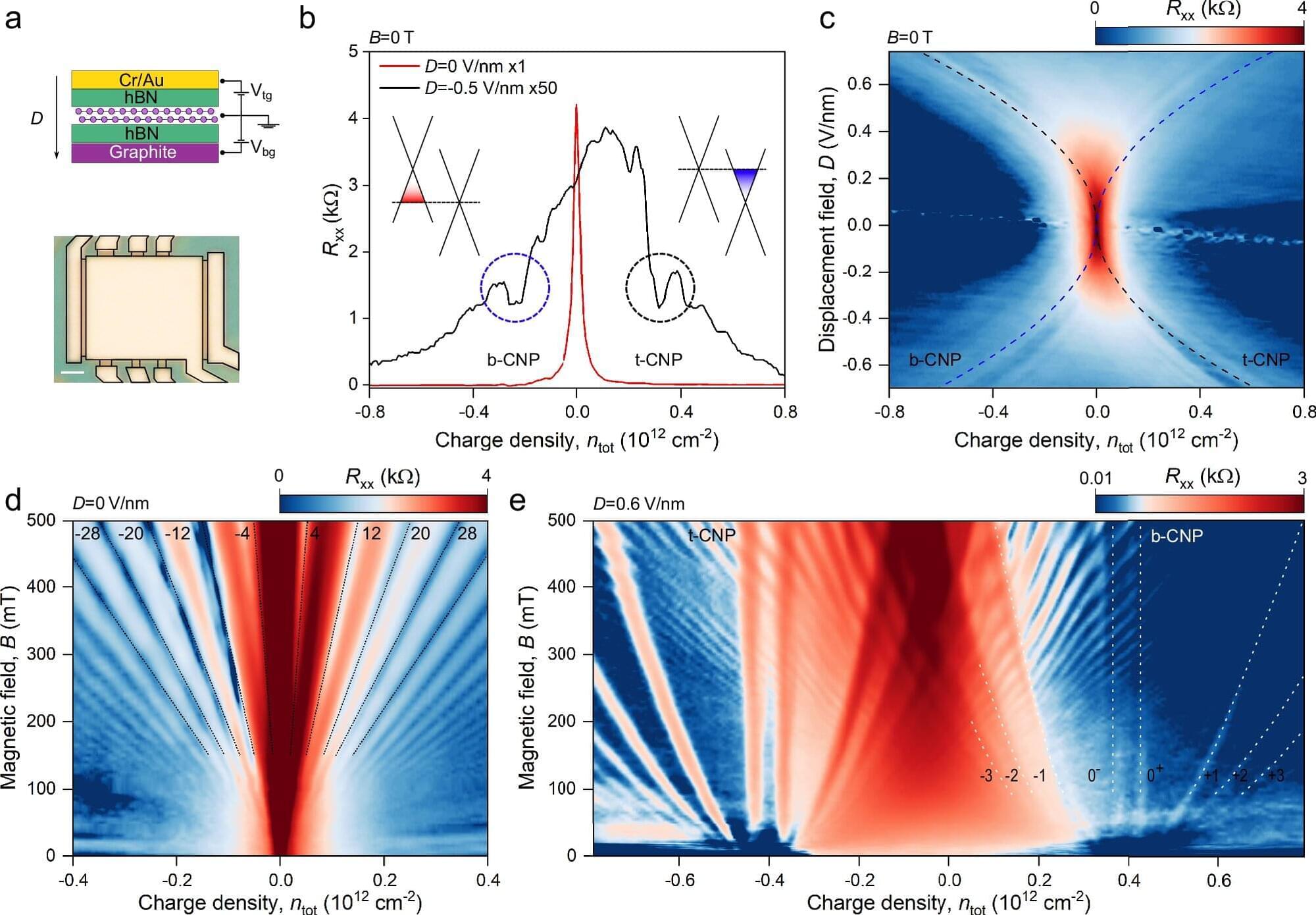Graphene, a single sheet of carbon atoms arranged in a honeycomb lattice, is known for its exceptional strength, flexibility and conductivity. However, despite holding the world record for room-temperature electron mobility, graphene’s performance at cryogenic temperatures has remained below that of the best gallium arsenide (GaAs)-based semiconductor systems, which have benefited from many decades of refinement.
One key obstacle is electronic disorder. In practical devices, graphene is highly sensitive to stray electric fields from charged defects in surrounding materials. These imperfections create spatial fluctuations in charge density, known as electron-hole puddles, that scatter electrons and limit mobility. This disorder has prevented graphene from realizing its full potential as an ultra-clean electronic system.
Now, in two parallel studies, researchers from the National University of Singapore (NUS) and The University of Manchester (UK) report distinct strategies that finally push graphene past this long-standing benchmark. The results set new records for electron mobility, matching and in some cases surpassing GaAs in both transport and quantum mobility, and enabling the observation of quantum effects in unprecedented conditions.
